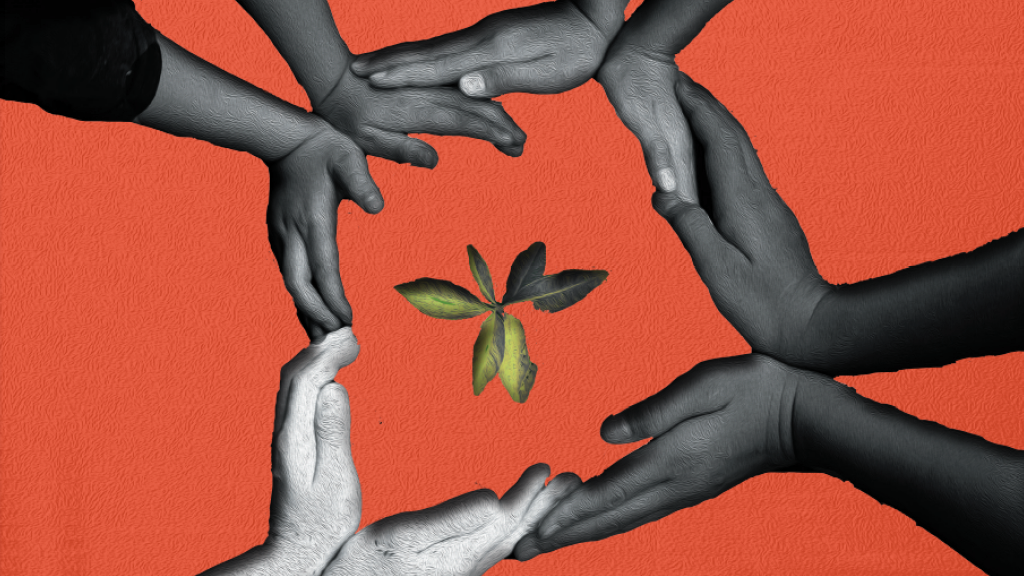Red Lines, Green Spaces
by River L Starliper | published Mar. 3rd, 2022
America is obsessed with violence; our news is filled with murder and corruption, people killed without reason or retribution. What happens when that violence is perpetuated through poison — when toxins contaminating the environment are not an accidental tragedy, but a targeted attack?
Poison for Whom?
Systemic racism has a long history in the U.S., and is defined as policy and practice that permeates an entire society and supports a system of unfair disadvantages based on race.
M. Ann Howard — an RIT professor of Environmental Studies, Policy and Sustainable Communities — broke down the term.
“Because communities of color [have] less political strength, less economic strength, they are more vulnerable to structural racism: institutional racism that discounts the importance of the adverse impacts,” she explained.
Environmental racism, specifically, is based primarily on the historical and continuing practice of placing environmental hazards closer to marginalized communities, as opposed to their upper-class, typically white, counterparts.
“Environmental racism is manifested in many many different ways. It’s not just in exposure to pollution and poor health," Howard said. "But all of this is rooted in ... a feeling that people of color are not worthy of participating, that the harms they have to endure are not worth paying attention to.”
“Environmental racism is manifested in many many different ways, it’s not just in exposure to pollution and poor health."
Placement of pollutant sources in communities of color, displacement of indigenous peoples to make way for national parks and the lack of trees in low-income areas are all examples of environmental racism — creating a problem with deep impacts that are often ignored by the people in charge.
Forward Development, Backwards Impact
In a warmer and more volatile world, scientists and city planners work hand in hand to institute green spaces and new legislation that can mitigate the effects of climate change.
One such scientist, recent RIT environmental science master’s graduate Joshua Greene, examined the relationships between environmental infrastructure and the socioeconomic status of surrounding communities.
“I wanted to look at ... how we have negatively impacted certain parts of our society due to where we place our green spaces as well as where we place other things such as factories and our major roads,” Greene said.
While at face value, urban greenspaces may appear to be beneficial to communities, those benefits come at a price. “Green gentrification” is the phenomenon of people being priced out of their homes as a result of skyrocketing property values due to the addition of new “green” features.
However, the potential to rectify existing urban environmental struggles with greener solutions creates a situation in which everyone can potentially benefit from these spaces, but many also risk losing their homes.
Still, we know that the technology to create a greener future is out there, and it is being used more favorably towards white and upper-class communities.
So what’s the obstacle to creating equitable urban ecosystem services? According to Greene, it all boils down to one thing: zoning.
“In a city, that would require a lot of work to get a lot of people on board ... city council, mayors; they’re the ones who write all the laws, they're the ones who decide what comes and what goes,” Greene explained.
If decisions on environmental infrastructure are left up to policy makers, what can average people do to make a change?
“Build relationships in your own community, understand who your neighbors are, what their issues are, what they're feeling and just guerilla tactics: start a community garden in your area,” Greene encouraged.
Creation of “green spaces” does not have to happen on a large scale — community actions like planting trees are just some of the ways in which we can work together towards a sustainable future.
But would city officials actually pay attention to small movements? Greene, as one such official, weighed in: “I like to imagine that we are listening. I know that I am listening.”
Sustainable Activism
Community action and local activism is the key to combating environmental racism, but it is not achieved easily, nor does it occur overnight.
Richard Newman, a RIT professor in the department of history who has previously written on both environmental and racial justice issues, described the mechanics required to make such a social change.
“You need lots of different groups of people to come together, to win political power, to create not just short-term change, but sustainable, long-term change,” Newman explained.
The fight against environmental racism in America is an uphill battle. People have, throughout history, instituted great societal changes — but this was not done by making the correct Tweet, or posting a black square on Instagram.
“Any change that has occurred in the United States or around the world has been the result, mostly, of long term activism ... And I think people have to really get their minds set on that,” Newman said.
In an America plagued by racism, Black activists are bombarded by struggle on all sides, and environmental issues cannot always take priority.
Activism fatigue is real, and it is difficult to inspire the kind of immediate dramatic action that would end environmental racism overnight.
Though it does not need to happen overnight.
“[Activism] requires thinking not about ending problems tomorrow, but starting tomorrow on the long-term solutions to things like environmental racism,” said Newman.
“[Activism] requires thinking not about ending problems tomorrow, but starting tomorrow on the long term solutions to things like environmental racism.”
So plant those trees, talk to your neighbors and hold your city officials accountable for the decisions they make.
Combating environmental racism starts in your own backyard: by organizing the community towards the end goal of coming together globally to build a better tomorrow — foreveryone.



